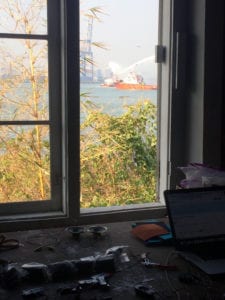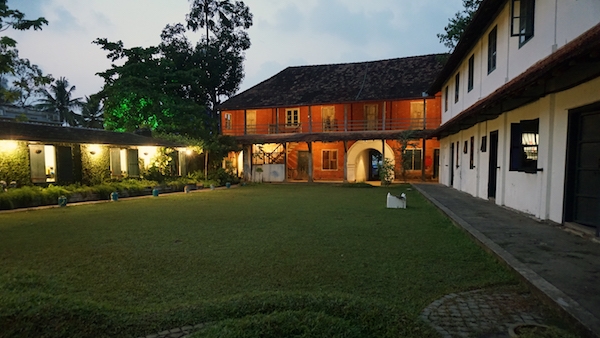Pepper House is one of the locations my partner organization, The Kochi Muziris Biennial Foundation, uses for exhibitions, artist talks, and residencies. It’s also the home of their art library. I have been spending many days running workshops and ironing out the details of my own project in this beautiful, historic space.
As a creative and progressive organization providing space for local and international viewpoints, I have been fortunate to have deep conversations about gender rights, learn about the methods transgender people navigate this community, and on one special occasion, unsuspectingly walk in on a band practice session of the reunion of a well-known local group who was playing in one of the many places the biennial has developed as artistic space. I have also been told that more Kochi community members attend the biennial each year, and that their tolerance for, and interest in, more challenging forms of art is growing.
Due to the nature of this foundation, “The People’s Biennale,” I have also been surrounded by a 20- to 30-year-old crowd who either work for or are involved in the biennial. As an artist-educator-dreamer, I have aspirations for creating spaces where conceptual and cutting-edge art is accessible to the community and art provides access for people to be empowered, rather than an opportunity or event focused on only one demographic. The Kochi Muziris Biennial has achieved this. I have met more than one young person here who has said they had no interest in art until the biennial changed their viewpoint, and that they are now pursuing careers in art that will take them further than they ever expected.
Association with the program also provides a kind of freedom that allows young people to operate outside some of the cultural expectations in the area. Just as I am able to walk on the streets after dark or wear clothing that shows more skin as a tourist (without someone attempting to admonish me for not acting acceptably), the young people associated with the Bienniale, especially women, are granted more leeway to navigate outside of acceptable cultural norms.
These access points will hold even more resonance in 2018 as the next biennial develops under the curatorial actions of Anita Dube. The word here is that women and transgender artists will hold a prominent place in this next exhibition, an important and progressive move for Kochi, which I can only hope will inspire curators back home.


The view out of my studio window looks a little bit like home. Kochi is an extremely cosmopolitan city with a 97% literacy rate. In many ways, it reminds me of my home, Seattle, which also has an extremely high literacy rate for the U.S., and is a shipping port with large dockside gantry crane, a history of leftist politics, and an affinity for plaid (here it is called Madras checks).

Selfies at the Kerala History Museum with my amazing assistant, Aparna, whose interest in contemporary art was spurred by the biennial.

